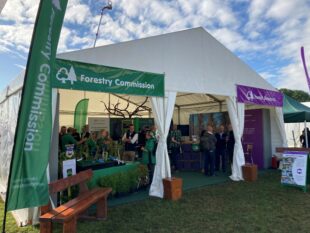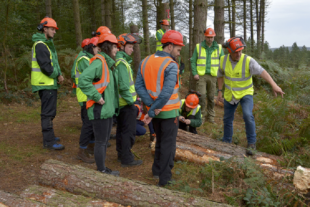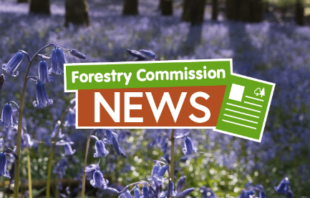 Emily Robinson, Content Officer at the Forestry Commission, explores the extraordinary world of fungi in our forests and woodlands and explains how we can support these vital fungal communities.
Emily Robinson, Content Officer at the Forestry Commission, explores the extraordinary world of fungi in our forests and woodlands and explains how we can support these vital fungal communities.
Picture yourself walking through a woodland on a misty autumn morning. While towering trees may be the first thing to capture your attention, you come to notice the fallen logs draped in emerald moss on the forest floor. At first glance, they appear lifeless – casualties of storms or age, slowly returning to the earth. But if you look closer, you’ll discover an extraordinary world at work.
Bracket fungi emerge from weathered bark like shelves, and beneath your feet, an invisible network stretches through the soil, connecting trees across vast distances. These are the fungi: the often-overlooked architects of our woodland ecosystems. Far from being mere decomposers clearing away nature’s debris, they are the engineers that make healthy woodlands and forests possible.
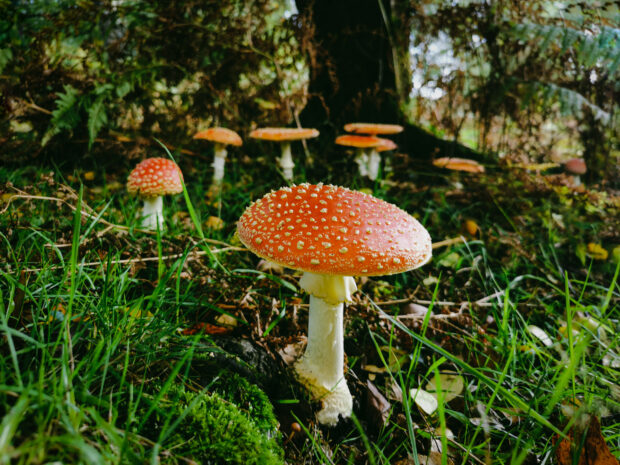
The hidden ecosystems within deadwood
When trees fall or shed branches, saprophytic fungi (saprophytes are organisms that get their nutrition from dead organic matter) immediately begin their crucial work of breaking the tree down. These fungi possess unique enzymes capable of breaking down lignin and cellulose – the complex compounds that give wood its strength and durability.
The decomposition process unfolds in stages and can take decades. Pioneer species colonise fresh deadwood first, softening the wood's defences. Waves of different fungal communities then follow, each adapted to extract specific nutrients from increasingly degraded material, creating a continuous cycle of nutrient release that feeds the surrounding vegetation.
Initially, firm bark begins to loosen and peel away, exposing the soft rot underneath. Over time, what was once solid timber becomes spongy, then crumbly, finally transforming into rich, dark humus (organic matter in soil that is formed by the decomposition of plant and animal matter) that nourishes forest soils. The bracket fungi emerging along trunks, and mushrooms appearing in crevices, are merely the reproductive fruiting bodies of vast thread-like networks penetrating deep within the wood.
This process creates opportunities for other decomposers and underpins deadwood ecosystems. Many invertebrates, including wood-boring beetles, millipedes and springtails, cannot consume wood until fungi have softened it first. These invertebrates accelerate decomposition by creating tunnels that improve air circulation and water infiltration. They also support complex food webs as they are vital food sources for other woodland wildlife.
Without fungi, woodlands would choke with accumulated deadwood, leaving nutrients trapped in dead matter and inaccessible for natural regeneration. Instead, fungi transform death into the foundation for new life, ensuring the continuous renewal that sustains thriving forests.
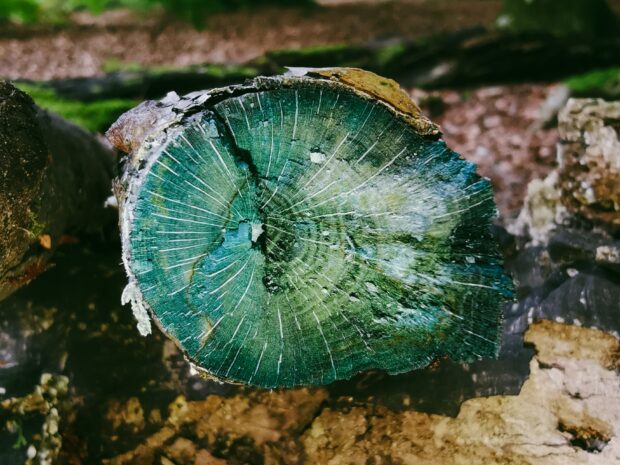
Building living soils that lock up carbon
Under every healthy forest is an invisible world where fungal networks weave through the soil like living threads. Mycorrhizal fungi work together with tree roots. They help trees access nutrients and water far beyond what roots alone could achieve. In return, the fungi receive sugars that trees produce through photosynthesis – an exchange that sustains both organisms.
These networks do far more than simply transport resources. As fungal hyphae (the threadlike structures that form mycelium) spread through the soil, they bind particles together using a protein called glomalin. This creates clumps of soil that protects against erosion and builds a robust soil structure. This increases pore space throughout the soil profile, improving both aeration and water infiltration, which allow trees to flourish.
The scale of this underground partnership is staggering. Recent research suggests that plants transfer more than 13 billion tonnes of carbon dioxide annually to mycorrhizal fungi1 – equivalent to roughly 36% of global fossil fuel emissions.2 This makes fungal networks vital, second only to the oceans as a global carbon reservoir.
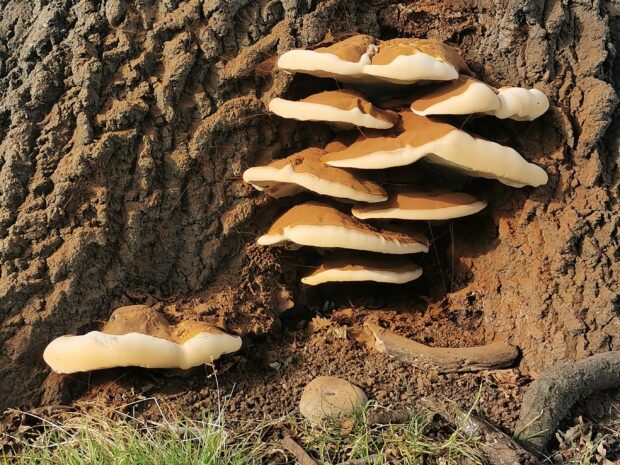
When fungi are harmful: pathogenic threats and tree resilience
While most fungal relationships benefit trees, not all fungi are woodland allies. Pathogenic species like honey fungus can devastate root systems, while diseases such as ash dieback have reshaped entire landscapes. Yet over millennia, trees and these fungi evolved alongside one another in a delicate balance.
Healthy trees developed robust defence systems – sealing off infected areas with chemical and physical barriers to isolate damage, producing antimicrobial compounds and relying on bark as protective armour. Meanwhile, pathogenic fungi remained present but rarely caused widespread mortality in healthy trees. This balance allowed forests to persist even as individual trees succumbed to infection.
Paradoxically, even pathogenic fungi serve important ecological roles by targeting stressed or weakened trees, removing compromised individuals and creating opportunities for regeneration.
Unfortunately, modern stressors have disrupted this equilibrium. Drought weakens trees' ability to produce defensive chemicals, pollution damages protective barriers and climate change creates conditions that aid aggressive pathogens, whilst simultaneously stressing their hosts. Pathogens introduced through global trade can also overwhelm trees that lack evolutionary defences against them, as was the case with Dutch elm disease.
Trees growing in diverse, healthy forest ecosystems often show greater resistance to diseases than those in simplified or stressed environments. Those with robust mycorrhizal partnerships demonstrate enhanced resilience against pathogenic attacks, partly through improved nutrition and drought tolerance. This resilience also potentially results from competition between beneficial and harmful fungi for resources and root access.
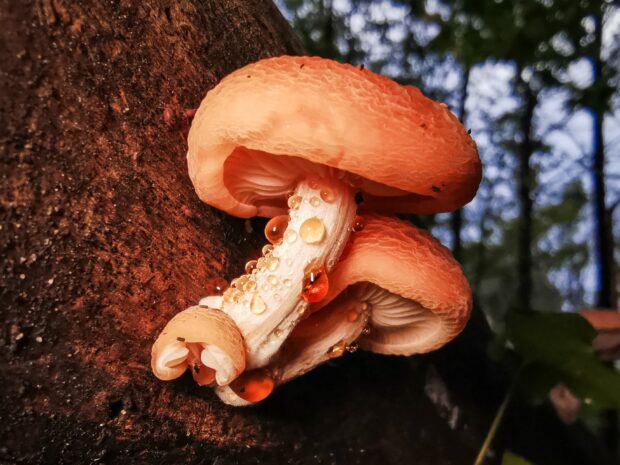
Managing woodland to support fungi
Understanding fungi's vital role can fundamentally shape how we manage our woodlands. The UK Forestry Standard (UKFS) emphasises the importance of maintaining natural processes and supporting fungal diversity is central to achieving this.
Strategically retaining deadwood is perhaps the most crucial management decision for nature and biodiversity. Woodland owners will need to be aware of potential risks posed by deadwood aiding the spread of pests and diseases and manage their woodland accordingly.
Generally, the greater the volume of deadwood, the higher the biodiversity value. Where possible, you can retain fallen trees and large branches in situ, to create a range of decay stages that support different fungal communities. When safety concerns require removal near paths or structures, relocate deadwood to other areas rather than removing it entirely from the ecosystem.
Mixed-species woodlands create more diverse underground networks, as different tree species support distinct mycorrhizal partners. This in turn strengthens overall tree resilience. The UKFS advocates this approach, recognising that diverse forests are more resilient to pests, diseases and the impact of climate change.
Minimising soil disturbance protects established fungal networks that can take years to develop. Heavy machinery compacts soil and damages delicate underground networks, so plan operations carefully and use low-impact extraction methods when harvesting trees. Consider seasonal timing too, such as avoiding major interventions during peak fungal activity in autumn when many species are reproducing.
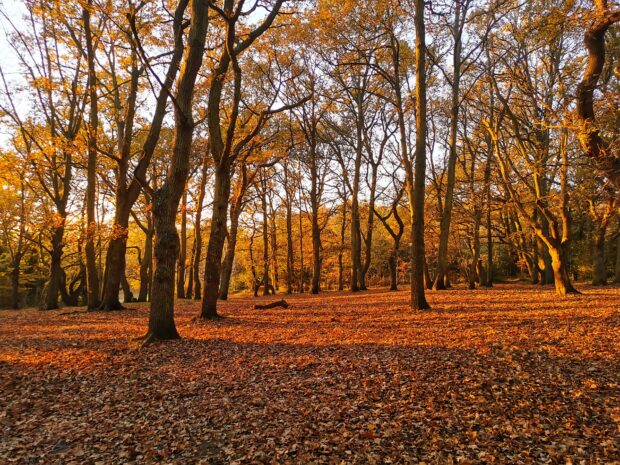
Embracing the unseen
Fungi may work largely unseen, but their influence shapes every aspect of woodland life. Without them, our forests would cease to function – nutrients would remain locked away, soils would crumble and trees would struggle to survive. They are the essential mediators between death and renewal, transforming fallen timber into fertile soil, while simultaneously nurturing living trees through vast underground partnerships.
As pressures from climate change and disease intensify, supporting healthy fungal communities becomes ever more critical. The future of our woodlands may well depend on the health of the fungal networks beneath our feet.
Discover more
Our experts have joined the newly formed UK Network for Fungal Conservation, to help support fungal communities across our forests and woodlands. Several woodland fungi, including the bearded tooth fungi and royal bolete have been selected as section 41 species in England for their conservation importance. The network aims to raise the profile of fungi which form an underrepresented group in conservation listings.
If you are interested in boosting biodiversity in your woodland, read Forest Research’s guide on managing deadwood in forests and woodlands.
